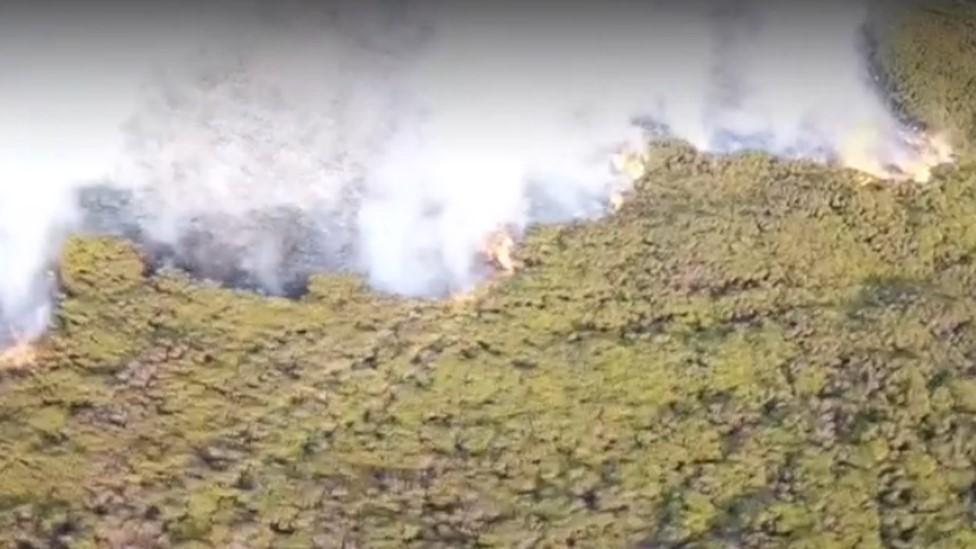Moorland fires: Wildfires 'spread dangerous pollution to millions'
- Published
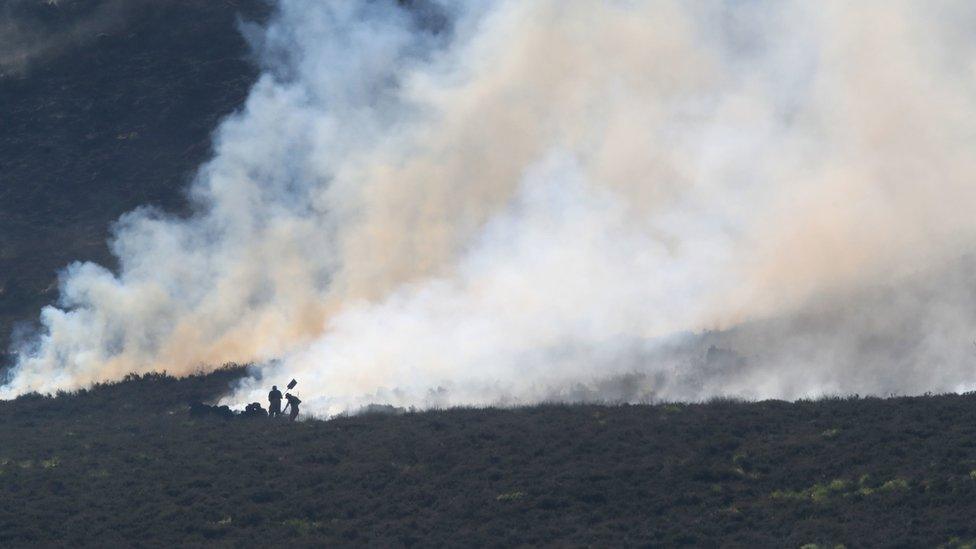
The Saddleworth Moor fire in June 2018 was the largest UK wildfire in recent decades
Huge wildfires in 2018 exposed five million people to dangerous levels of polluted air, a new study has found.
The devastating blazes at Saddleworth Moor and Winter Hill were battled by hundreds of firefighters and soldiers.
Researchers, led by the University of Leeds, found that the wildfires caused poor air quality over a large region, reaching as far away as Southport.
They also calculated that nine deaths were "brought forward" due to the fires in Greater Manchester and Lancashire.
"We should be aware that the smoke from wildfires can travel long distances, and can damage people's health, even far from the fires," the researchers said in their paper, published in Environmental Research Communications., external
"Although people may not have been able to smell smoke, particulate matter was very high in areas far away from the fires, such as Southport and Wigan."
Southport is about 50 miles to the west of Saddleworth Moor.
The authors also estimated the economic impact of the fires to have been £21.1m.

Hundreds of firefighters, aided by helicopter crews, were needed to tackle the Winter Hill widlfire
Researchers found that five million people were exposed to levels of dangerous particulates - known as PM2.5 - for at least one day between 23 and 30 June 2018.
The levels exceeded World Health Organization limits.
They also warned that climate change scenarios predict that UK summers will become both hotter and drier.
This means wildfires are likely to become more common, with a consequent negative impact on health.
The Saddleworth blaze broke out on 24 June and, at its height, about 100 soldiers were drafted in to help tackle it.
At its peak the fire covered an area of 7 sq miles (18 sq km) of moorland.
Hundreds of firefighters were also needed to tackle the Winter Hill blaze, which broke out four days later, and spread across a similar area of land.
- Published26 March 2020
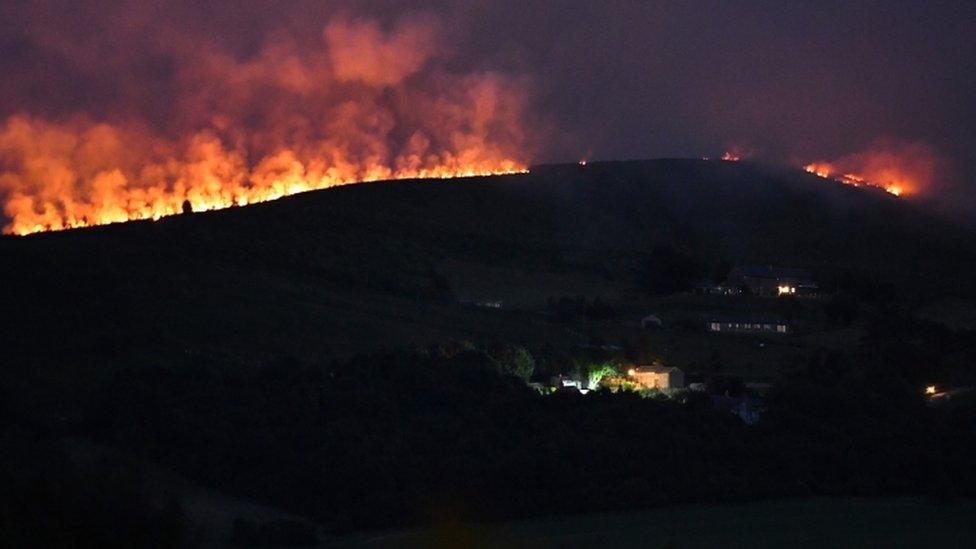
- Published24 April 2019
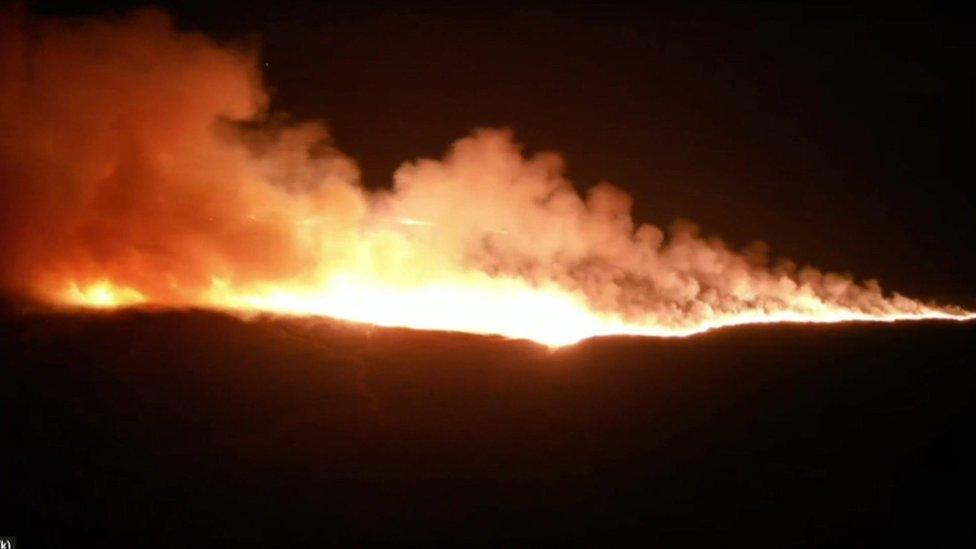
- Published18 July 2018
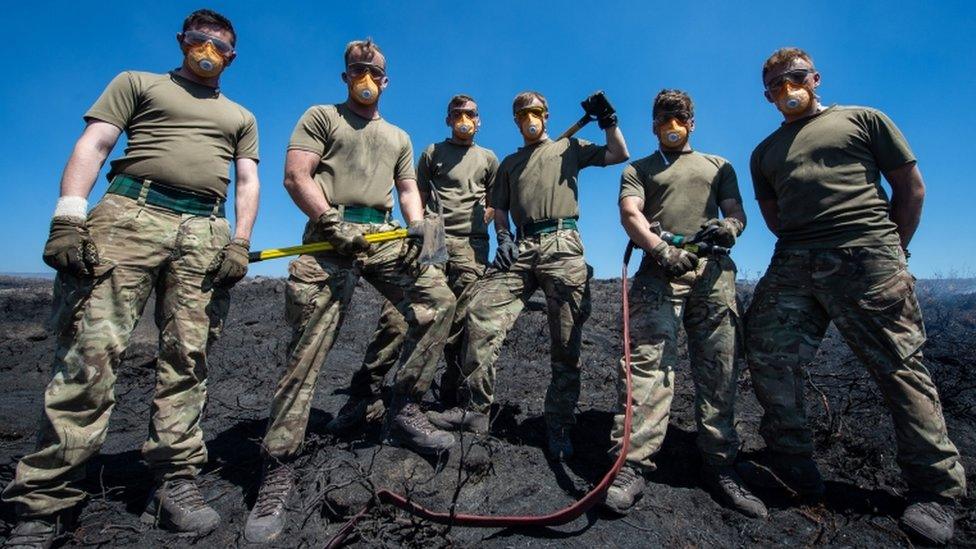
- Published16 July 2018

- Published5 July 2018
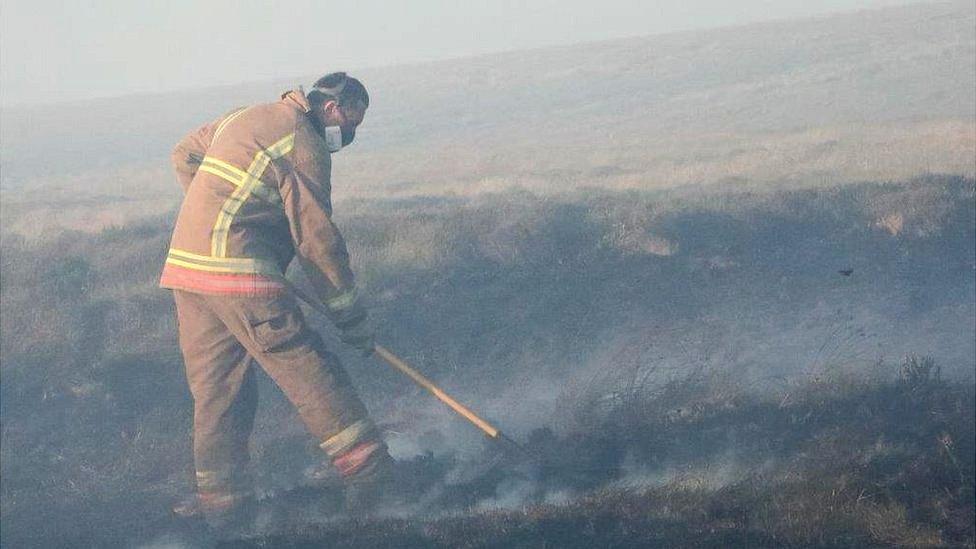
- Published26 June 2018
